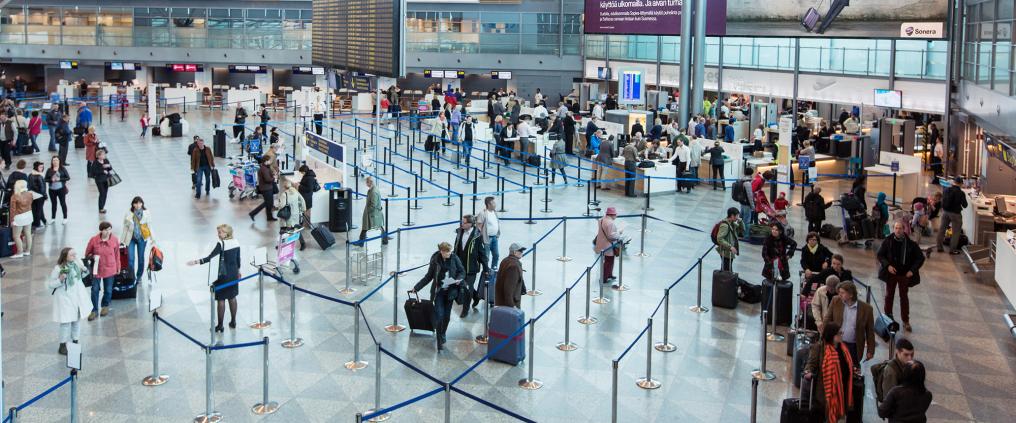Due to Helsinki Airport's compact size and efficient layout, queuing is not a huge issue in general. A passenger can expect to fall in line at the usual spots: the bag drop, security check, passport control and the boarding gate.
“During rush hours, referring mainly to morning and afternoon peaks, short queueing at these checkpoints is a normal case and the length of the line or waiting time varies according to passenger figures and traffic,” says Jari Härkönen, Head of Terminal Control at Finavia.
He adds that excluding these mandatory stops, it is also possible that passenger flow sometimes slows down at the gate area of the terminal’s older parts. “That comprises the Schengen area, as non-Schengen is relatively spacious.”
A single queue system, sometimes called a snake queue, is the most common configuration used at airports. (Meanwhile, a multiple queue system, or a parallel queue, is often seen at supermarkets and retail outlets.) Security control at Helsinki Airport has made use of this physical queue configuration for ages, according to Härkönen.
“Snakes do get the crowd organized in a smaller space, therefore opening space between areas and checkpoints. This system is also fair to all: The first ones to fall in line are the first to get to the checkpoint. It doesn’t depend on how many checkpoint lanes are actually open.”
To ensure that the atmosphere of the queuing areas remains light and pleasant, Härkönen says that making the flow even between checkpoints is a priority. Signs and efficient and well-organized queueing systems help to achieve this. Automation also speeds up the queueing process.
At the airport, queues are often the busiest from 6:00 to 7:00 am and from 2:30 to 4:00 pm. This goes for both local and transfer checkpoints.
Every airside and landside facility and service can be viewed as a queuing system. Predicting airport flow systematically is possible with consistent calculation. As Härkönen says, the clear goal is to keep waiting times short. “This, obviously, contributes to a good passenger experience and gives people more time to enjoy airport facilities and services instead of spending too much time in queues.”
Read about the new security control service at Helsinki Airport



